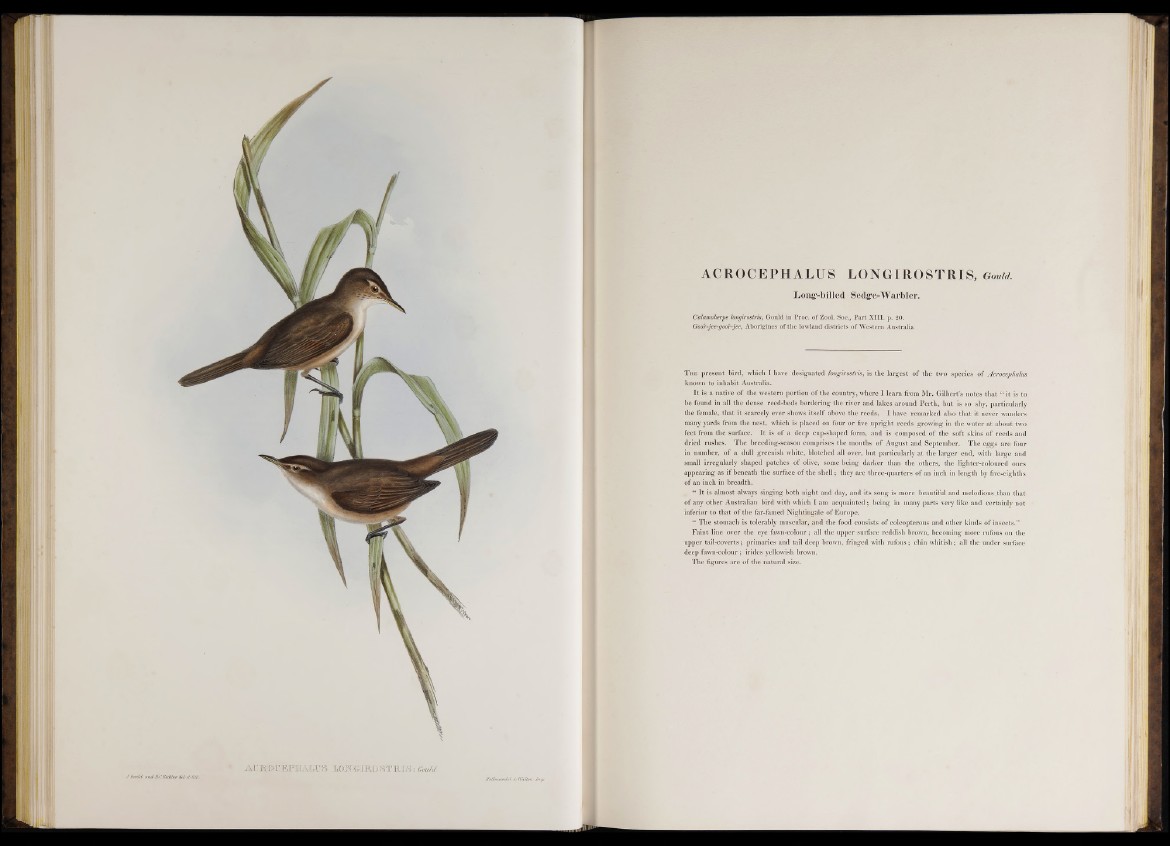
AeMCEFBL<O M1TOIB,© .STKIiS I G w h t.
ACROCEPHALUS LONGIROSTRIS, Gould.
Long-billed Sedge-Warbler.
Calamoherpe longirostris, Gould in Proc. of Zool. Soc., Part XIII. p. 20.
Goor-jee-goof-jee, Aborigines of the lowland districts of Western Australia.
T h e present bird, which I have designated longirostris, is the largest of the two species of Acroceplalus
known to inhabit Australia.
It is a native of the western portion o f the country, where I learn from Mr. Gilbert’s notes that “ it is to
be found in all the dense reed-beds bordering the river and lakes around Perth, but is so shy, particularly
the female, that it scarcely ever shows itself above the reeds. I have remarked also that it never wanders
many yards from the nest, which is placed on four or five upright reeds growing in the water at about two
feet from the surface. It is of a deep cup-shaped form, and is composed o f the soft skins o f reeds and
dried rushes. The breeding-season comprises the months of August and September. The eggs are four
in number, of a dull greenish white, blotched all over, but particularly at the larger end, with large and
small irregularly shaped patches of olive, some being darker than the others, the lighter-coloured ones
appearing as if beneath the surface of the shell; they are three-quarters o f an inch in length by five-eighths
of an inch in breadth.
“ It is almost always singing both night and day, and its song is more beautiful and melodious.than that
o f any other Australian bird with which I am acquainted ; being in many parts very like and certainly not
inferior to that o f the far-famed Nightingale o f Europe.
“ The stomach is tolerably muscular, and the food consists of coleopterous and other kinds o f insects.”
Faint line over the eye fawn-colour; all the upper surface reddish brown, becoming more rufous on the
upper tail-coverts; primaries and tail deep brown, fringed with rufous; chin whitish; all the under surface
deep fawn-colour ; irides yellowish brown.
The figures are o f the natural size.